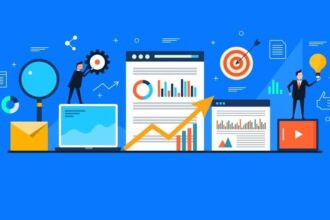The world of big data is constantly changing and evolving, and 2021 is no different. As we look ahead to 2022, there are four key trends that organizations should be aware of when it comes to big data: cloud computing, artificial intelligence, automated streaming analytics, and edge computing. Each of these trends will continue to shape the way companies use data in the coming years.
With the growth of technology, the amount of data collected each day has increased exponentially, with no signs of slowing down anytime soon. We should expect to analyze big data in the future as businesses are looking more closely to use it to remain competitive. This post outlines five current trends in big data for 2022 and beyond.
1. The Rise of Streaming Analytics
Streaming analytics is a new trend in data analysis that has been gaining popularity in the past few years. It is based on the idea that real-time data can be analyzed as it comes in rather than waiting until all the data has been collected. The rise of streaming analytics can be attributed to three significant factors. First, more organizations are moving their operations online, and a significant amount of business is conducted online. This means that more companies have access to data in real time than ever before. Second, the amount of data being produced has increased exponentially over the past decade.
- An increase in computing power
- Advancements in data storage techniques
- Changes in technology used by consumers
2. The Emergence of AI-Driven Big Data
AI-driven data is the next generation of big data. The following factors will influence the emergence of AI-driven big data:
- The volume of data
- The speed at which AI tools can process data
- Accuracy with which they can interpret it
- Degree of automation they can provide
This change from human intelligence to machine intelligence will not happen overnight. It is a gradual process that has already started in many businesses, including finance, healthcare, insurance, and telecommunications. Businesses can use AI tools to: Automate and scale up business processes, so they can be done more quickly and efficiently. Provide improved customer service by answering questions, helping with problems, and solving them before they arise.
3. The Growth of Edge Computing
Edge computing is processing data at the edge of a network, or on the device itself rather than in a centralized location. The growth in edge computing is mainly due to the increasing popularity of Internet of Things (IoT) devices.
Managing all that data from one centralized area is challenging with so many connected devices. That’s why many small businesses are starting to build or use third-party networks that can handle edge computing. For instance, small business dashboard software allows users to run applications locally instead of sending them back to the cloud.
4. The Growth of Natural Language Processing
Natural language processing is one of the most popular trends in big data. This technology is part of artificial intelligence that operates to develop communication between humans and computers. Natural language processing uses various algorithms to read, decode, and comprehend human speech.
The two most common types of algorithms are deep learning and machine translation. Natural Language Processing (NLP) algorithm techniques require grammar rules to recognize and obtain data from every sentence.
5. Strong Reliance On Cloud Storage
Cloud storage is a viable solution for your data, but it has a few drawbacks. It’s not always the best choice for large or extremely sensitive data. Additionally, if you’re using many cloud storage services, it can be hard to track them all. However, cloud storage is still one of the most popular trends in big data. These days, people are more concerned about who accesses their information than where their information is stored.
Endnote
With the trends in big data changing daily, businesses need to adjust to new technologies to catch up and stay ahead of their competitors. The list of trends we have shared above can assist businesses and individuals in staying on top of the trends.










